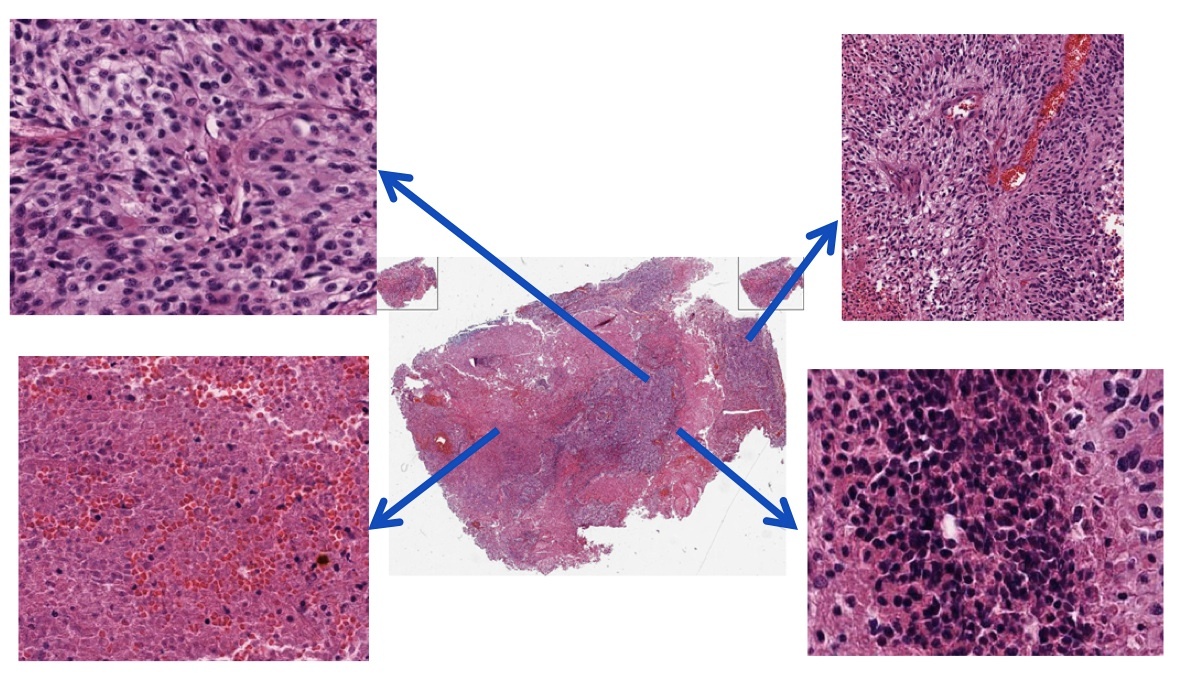Berkeley Lab scientists led the development of an algorithm and a computational pipeline, making extensive use of the Lawrencium Cluster, that analyzes large sets of tumor images. Their work will help scientists learn more about the genetic and molecular mechanisms that control tumor signatures. It will also shed light on whether tumor subtype can predict the effectiveness of therapies. The research was led by Hang Chang, Ju Han, Leandro Loss, and Bahram Parvin of the Life Sciences Division, as well as scientists from several other institutions. The scientists validated their pipeline by applying it to 377 whole-slide images from patients who have an aggressive brain cancer. More>
A tumor’s organizational complexity is revealed. The center image is a whole-slide image of a Glioblastoma Multiforme tumor. The arrows indicate enlarged, distinct regions. Berkeley Lab scientists have developed an automated way to analyze large sets of tumor images.


